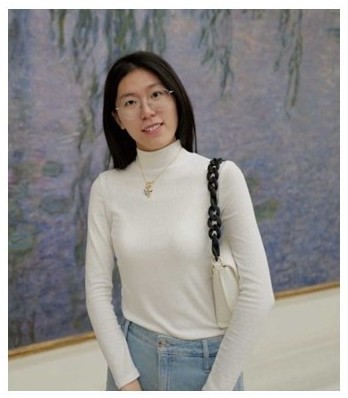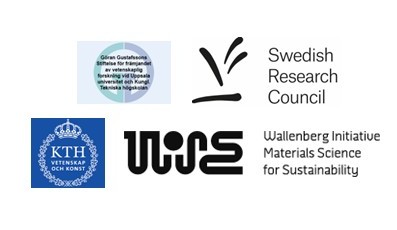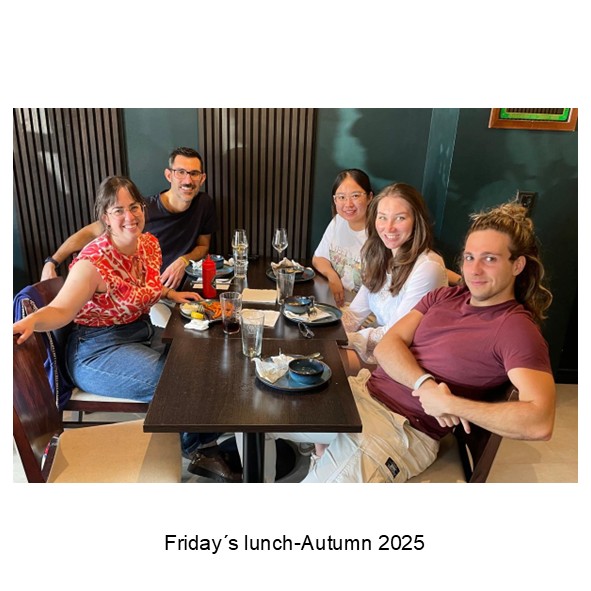Paula Sebastián Pascual
Assistant professor
Details
Researcher
About me
I am an Assistant Professor and WISE fellowship (Wallenberg Initiative Materials Science for Sustainability) at the Chemistry Department of KTH, where I started in January 2024. Previously, I was a postdoc researcher (2018-2022) at the University of Copenhagen (UCPH). In 2023, just before moving to Sweden, I became both assistant professor and principal investigator at UCPH with a Villum Young Investigator grant. My main scientific interest is understanding why different surface structures have different catalytic properties and investigating new electrochemical methods to prepare tailor-made nanostructured catalysts for electrocatalysis.
SurfDep group:
Surface electrochemistry and nanostructure electrodeposition.


We are a young research group in experimental electrochemistry. Our main goal is to understand what makes catalysts suitable for specific electrocatalytic reactions from an experimental basis. More specifically, we aim to find which electrochemical conditions and catalyst structures enable more efficient production of renewable chemicals. Our research combines studies on model surfaces, such as single crystalline electrodes, and electrodeposition methods to prepare nanostructured surfaces with tailored geometry and composition for their application in different electrocatalytic reactions.
Projects.
1) Tailor-made copper surfaces for the electrochemical conversion of carbon dioxide and bio-based organic molecules.
Copper has promising catalytic properties for different reactions, such as carbon dioxide's electrochemical hydrogenation and the conversion of biomass-derived aldehydes to produce fuels and chemicals. However, these electrocatalytic reactions are affected by the active site´s geometry and surface structure. Here, we perform studies with copper single facets and prepare copper surfaces with tuned facet distribution to tune product selectivity in electrocatalytic reactions.
Voltammetric fingerprints of Cu single facets and tailored copper electrodes.
2) Nanostructure electrodeposition of multimetallics.
Here, we investigate the applicability of biocompatible, nontoxic solvents, such as deep eutectic solvents (DES) and/or other ionic liquids, to prepare nanostructured materials using the electrodeposition technique. Our research aims to assess the effects of solvent and substrate on the first stages and growth mechanism of the deposited nanostructures.
3) Organic oxidation reactions and hybrid electrolysis.
Water electrolysis to produce hydrogen is energy-consuming due to the large overpotential needed for the oxygen evolution reaction at the anode. Alternatively, the hydrogen evolution reaction can be coupled with the oxidation of bio-based organic molecules, which requires lower applied potentials and produces valuable compounds. Here, we aim to rationally address how composition in bimetallic nanostructures influences product selectivity, overpotential, and catalyst stability under oxidation reaction conditions.
Cell for metal electrodeposition, deposited PdAu3 and formic acid oxidation.
Members:
Vicente Pascual Llorens

Vicente is a chemical engineer and holds a Master's degree in Electrochemistry, science, and Technology from the University of Alicante (Spain). After completing his master's degree, he spent one year at the Chemistry Department of the University of Copenhagen working as a research assistant in the group of Electrochemistry. During his PhD, he will explore new electrochemical strategies to prepare tailor-made copper surfaces with tuned surface structures.
ORCID: 0000-0001-8472-0774
Marco Milia

Marco Milia completed his PhD in sea-water electrolysis at the University of Copenhagen (Denmark) under the supervision of Prof. Ji-Wong Lee. Marco will join us as a postdoc researcher to investigate and prepare copper-based nanostructured catalysts for the partial oxidation of aldehydes.
Leona Komparic

Leona is a PhD student within the WISE organisation, working on her research at KTH. She has a master´s degree in Applied Chemistry from the Faculty of Chemical Engineering and Technology, University of Zagreb, Croatia. During her PhD, she will prepare bimetallic nanostructures with tailored composition and structure via electrodeposition methods for organic oxidation reactions.
Lanying Hannah Han

Lanying is a PhD student working on a project funded by VR (Swedish Research Council). She has a master´s degree in Electrochemistry from Imperial College London. During her PhD, she will explore the use of potential pulses to tune the shape and composition of electrodeposited copper-based mono and bimetallic particles for hydrogenation reduction reactions.
Current positions:
(2026-2029) A postdoc position funded by WISE will be open in 2026
We are also looking for highly motivated MSc and Bachelor students to carry out projects within us (contact: paulasp@kth.se).
Undergrad and master's students:
Guantong Li
Short Master's project on electrodeposition of bimetallic Pd-based nanostructures. (September 2025-November 2025).
Publications:
(1)Pascual-Llorens, V.;Serra-Ramos, A.;Sebastián-Pascual, P.*,Controlled formation of shape structures via electrochemical surface modification of Cu(111). Electrochimica Acta,2025, https://doi.org/10.1016/j.electacta.2025.145793
(2)Pascual-Llorens, V.; Serra-Ramos, A.; Mazaira-Couce, P.; Escudero-Escribano, M.;Sebastián-Pascual, P.*;Surface nanostructuring of copper using fluoride and chloride.ChemElectroChem, 2024, 10.1002/celc.202400414.
From postdoc research period:
(3)Plaza-Mayoral, E.; Okatenko, V.; Nicole Dalby, K.; Falsig, H.; Chorkendorff, I.;Sebastian-Pascual, P.*; Escudero-Escribano, M.*;Composition effects of electrodeposited Cu-Ag nanostructured electrocatalysts for CO2 reduction.i-Science (2024) Volume 27, Issue 6109933.10.1016/j.isci.2024.109933.
(4)Plaza-Mayoral, E.*; N. Dalby, K.; Falsig, H.; Chorkendorff, Ib.;Sebastián-Pascual, P.*; Escudero-Escribano, M.*;Preparation of Tunable Cu−Ag Nanostructures by Electrodeposition in a Deep Eutectic Solvent.ChemElectroChem, (2024), 11,e202400094.10.1002/celc.202400094.
(5) Mazaira-Couce, P.; Kongstad Madsen, T.; Plaza-Mayoral, E.; Høgh H Kristoffersen, H.*;Chorkendorff, I.; Nicole-Dalby, K.; van der Stam, W.; Rossmeisl, J.; Escudero-Escribano, M.*;Sebastián-Pascual, P.*;Tailoring the facet distribution of copper with chloride. Chemical Science, (2024),10.1039/D3SC05988J.
(6)Sebastián-Pascual, P.; Petersen, A. S.; Bagger, A.; Rossmeisl, J.; Escudero-Escribano, M., PH and Anion Effects on Cu–Phosphate Interfaces for CO Electroreduction.ACS Catalysis,11 (2021) 1128–1135. 10.1021/acscatal.0c03998.
(7)Sebastián-Pascual, P.; Escudero-Escribano, M.,Addressing the Interfacial Properties for CO Electroreduction on Cu with Cyclic Voltammetry.ACS Energy Letters,5, 1(2020) 130-135.10.1021/acsenergylett.9b02456.
Funding:
Our team is co-funded by the Knut and Alice Wallenberg Foundation, the Swedish Research Council (VR), Göran Gustafssons Stiftelser, and KTH. We are part of the Wallenberg Initiative Materials Science for Sustainability (WISE) program.

Gallery:


Contact details:
E-mail:paulasp@kth.se
Office:723, lab 755
Adress:TEKNIKRINGEN 30
Courses
Analytical Chemistry (CK1290), teacher
Analytical Chemistry with Statistics (CK1295), teacher
Chemical Equilibrium (CK1280), teacher
Chemical Equilibrium (CK1285), teacher
Hydrogen (CK2320), teacher
Project in Chemistry (KD2910), examiner
Research Frontiers in Chemistry (FCK3315), examiner, course responsible